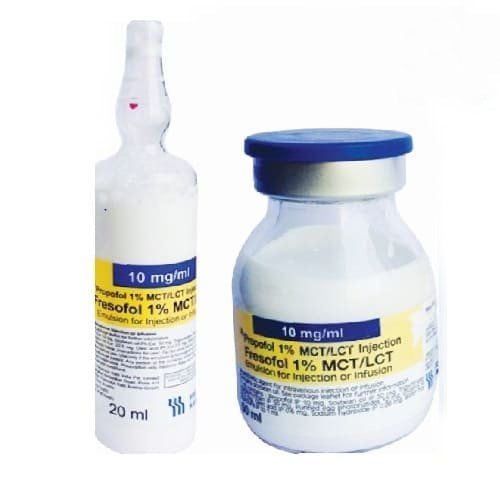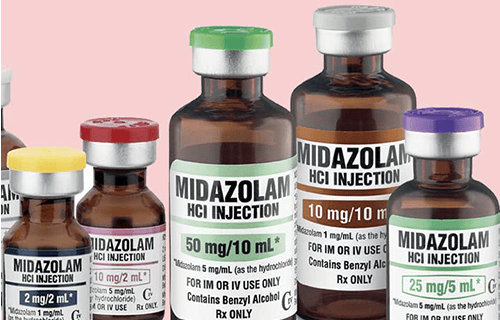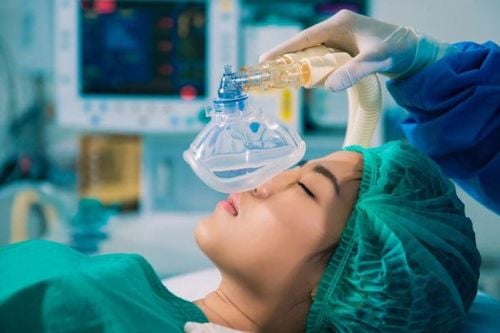This is an automatically translated article.
The article was professionally consulted by Specialist Doctor II Nguyen Binh - Department of General Surgery - Vinmec Ha Long International Hospital.Facial laryngeal anesthesia is a technique of general anesthesia with laryngeal mask placed for the purpose of breathing control, loss of pain sensation during surgery. The appropriate laryngeal mask anesthesia is indicated in ophthalmic surgery, including orbital decompression surgery, which is very safe and effective.
1. Overview
Orbital decompression surgery is surgery to break down the orbital wall, open the visual hole for the purpose of removing the soft tissues contained in the orbit or cutting the bone walls in the orbit to increase the orbital volume in order to increase the volume of the orbit. release compression of the optic nerve, reduce eye protrusion and other eye manifestations caused by blood vessel compression, prevent eye complications that do not affect vision.During surgical anesthesia ensuring good ventilation is the most important issue. Endotracheal anesthesia is an effective and reliable method of respiratory control. However, intubation also causes rapid pulse, increased blood pressure, sore throat, painful swallowing, hoarseness. Therefore, the use of surgical laryngeal mask anesthesia to avoid the above-mentioned complications is especially popular in ophthalmic diseases.

Phẫu thuật giảm áp hốc mắt là phẫu thuật mở lỗ thị giác
Laryngeal mask anesthesia is a technique of general anesthesia with a laryngeal mask placed for the purpose of controlling breathing and reducing pain for the patient during surgery. Laryngeal mask placement anesthesia is an easy technique to perform, does not require experienced people, and has little stimulation when extubating, which is very suitable for ophthalmic surgery.
Notes in laryngeal mask anesthesia:
Respiratory control; Control of the oculo-cardiac reflex; Intraocular gas control; Note the unwanted effects of anesthetic drugs.
2. Indications and contraindications of laryngeal mask anesthesia
Indications
Patients with orbital hypertension; Difficulty mask respiratory control; Maintain anesthesia with inhalational or intravenous anaesthesia, for spontaneous breathing or controlled respiration. Contraindications
Insufficient means of resuscitation. Not technically proficient.
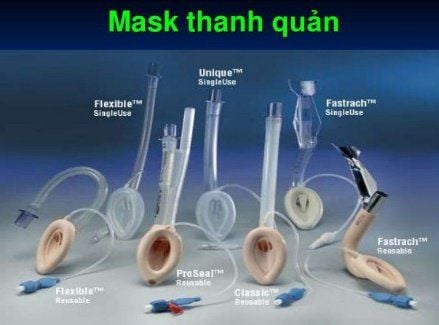
Mặt nạ thanh quản
3. Procedure for performing laryngeal mask anesthesia for orbital decompression surgery
3.1 Prepare laryngeal masks of different sizes depending on age, endotracheal intubation equipment to prevent failure of laryngeal mask placement, constriction suitable for laryngeal masks, bronchial suction catheters and oral suction tubes, face masks different sizes, suction machine, ventilator, ...
3.2 Procedure Step 1: Pre-anesthesia. Place the patient in the supine position and then administer pre-anesthesia. Note that it is necessary to prevent cardiac reflexes with drugs.
Step 2: Initiate anesthesia. The steps are as follows:
Give the patient 100% oxygen with a face mask; Most start with fentanyl. Initiate anesthesia with hypnotics (Propofol, volatile anesthetics) and muscle relaxants if necessary; The dose of drugs used is according to the dose of intravenous anesthetic, the anesthetic vaporizes until the chin is late, the eyeball is in the middle, the mask can be placed. Step 3: Place the laryngeal mask.
Place the laryngeal mask according to the technique of holding the mask with the index finger like holding a pen with the tip of the index finger placed at the junction between the mask and the tube, pushing the mask to slide along the upper wall of the palate towards the back of the throat. Push and slide easily until you meet resistance is to reach the vestibule of the larynx, put the mask in the right position, the laryngeal mask lies face down on the vestibule of the larynx.
Step 4: Fix the mask.
When the mask is in position to pump the cuff. Check that the mask is in place by listening to the patient's neck for good ventilation. Secure the tube with adhesive tape.
Step 5: Maintain anesthesia during surgery with evaporative anesthetic or by machine or hand squeeze. Note to monitor the parameters when maintaining anesthesia: pulse, blood pressure, SpO2,...
Step 6: Before the end of surgery, reduce the dose of intravenous anesthetic via the electric pump, reduce the dose of volatile anesthetic a little bit.
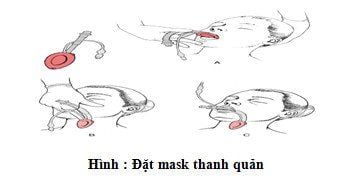
Quy trình đặt mask thanh quản
4. Complications due to laryngeal mask anesthesia
Failure to set the mask is usually due to the anesthesia not being deep enough; Improper placement of auscultation can detect laryngeal hiss; Injury when putting on mask due to too rough movements; Increased pulse, increased blood pressure during laryngeal mask placement; laryngotracheal spasm; The laryngeal mask tube is folded, the mask is lowered, the mask is out of position; Note the complications caused by muscle relaxants, morphine. Vinmec International General Hospital is one of the hospitals that strictly apply safe surgical anesthesia practice standards according to international guidelines. With a team of experienced anesthesiologists and nurses, along with modern equipment such as nerve detectors, ultrasound machines, Karl Storz difficult airway control system, anesthesia monitoring system GE's comprehensive AoA (Adequate of Anesthesia) including monitoring of anesthesia, pain and muscle relaxation will deliver high quality and safety, helping patients to have adequate anesthesia, not awake, no residual relaxant muscle after surgery. Vinmec Health System is also proud to be the first hospital in Vietnam to sign with the World Anesthesiology Association (WFSA) towards the goal of becoming the safest hospital for surgical anesthesia in Southeast Asia.
Doctor Nguyen Binh has more than 20 years of experience in the field of anesthesia - resuscitation in thoracic surgery, anesthesiology resuscitation for elderly patients... Currently a Doctor of General Surgery, National General Hospital Vinmec Ha Long International.
To register for examination and treatment at Vinmec International General Hospital, you can contact Vinmec Health System nationwide, or register online HERE.







